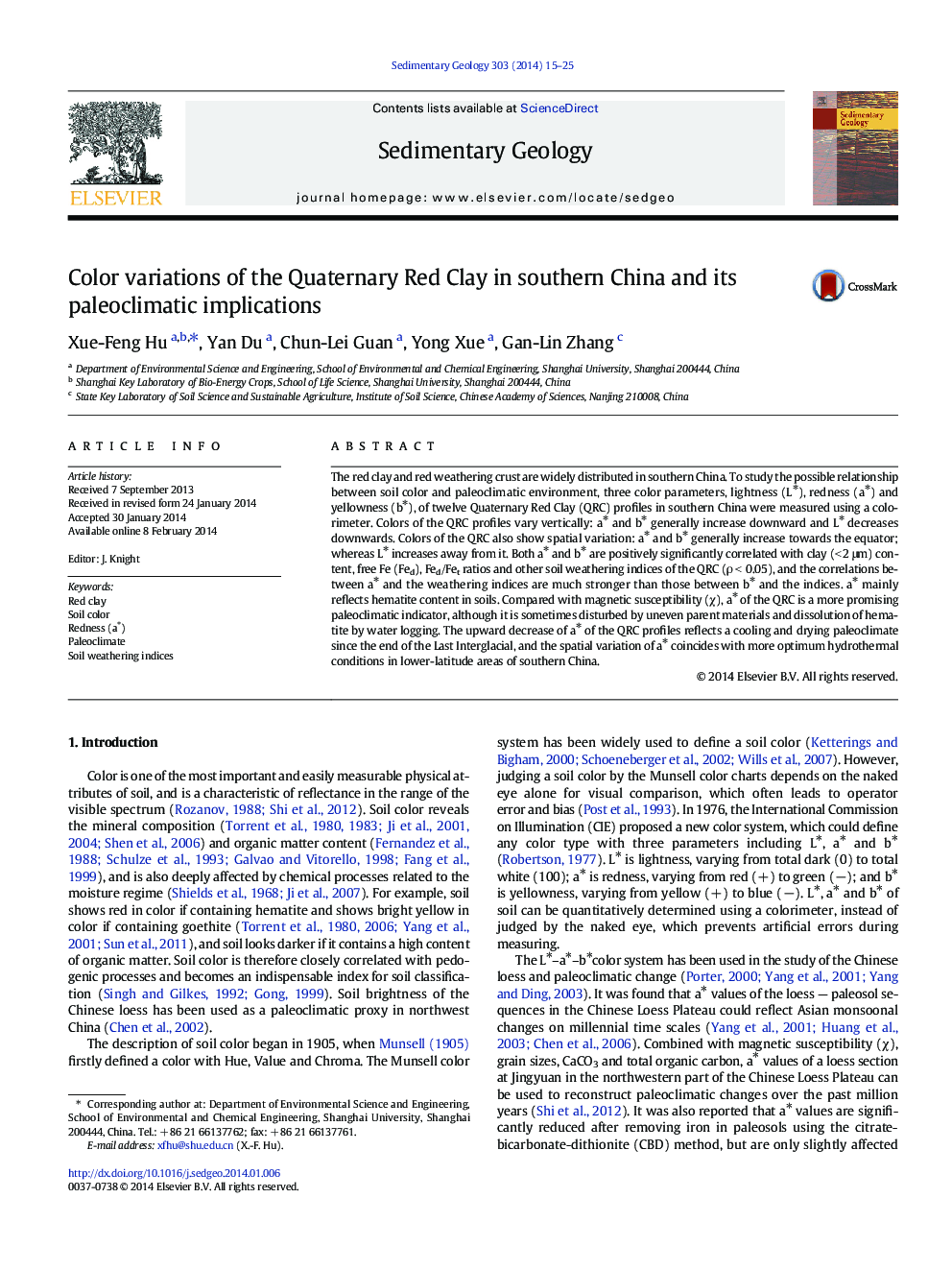| Article ID | Journal | Published Year | Pages | File Type |
|---|---|---|---|---|
| 4689451 | Sedimentary Geology | 2014 | 11 Pages |
Abstract
The red clay and red weathering crust are widely distributed in southern China. To study the possible relationship between soil color and paleoclimatic environment, three color parameters, lightness (Lâ), redness (aâ) and yellowness (bâ), of twelve Quaternary Red Clay (QRC) profiles in southern China were measured using a colorimeter. Colors of the QRC profiles vary vertically: aâ and bâ generally increase downward and Lâ decreases downwards. Colors of the QRC also show spatial variation: aâ and bâ generally increase towards the equator; whereas Lâ increases away from it. Both aâ and bâ are positively significantly correlated with clay (< 2 μm) content, free Fe (Fed), Fed/Fet ratios and other soil weathering indices of the QRC (Ï < 0.05), and the correlations between aâ and the weathering indices are much stronger than those between bâ and the indices. aâ mainly reflects hematite content in soils. Compared with magnetic susceptibility (Ï), aâ of the QRC is a more promising paleoclimatic indicator, although it is sometimes disturbed by uneven parent materials and dissolution of hematite by water logging. The upward decrease of aâ of the QRC profiles reflects a cooling and drying paleoclimate since the end of the Last Interglacial, and the spatial variation of aâ coincides with more optimum hydrothermal conditions in lower-latitude areas of southern China.
Keywords
Related Topics
Physical Sciences and Engineering
Earth and Planetary Sciences
Earth-Surface Processes
Authors
Xue-Feng Hu, Yan Du, Chun-Lei Guan, Yong Xue, Gan-Lin Zhang,
